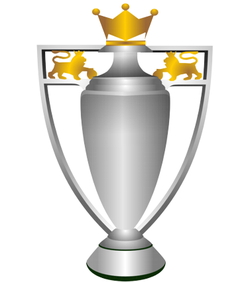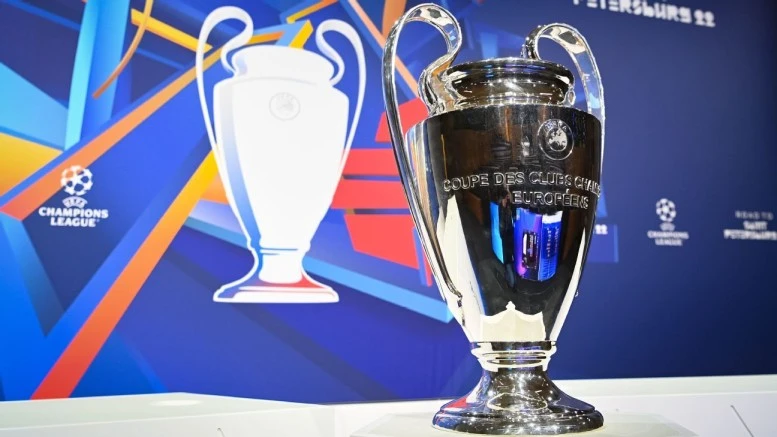
The History Of Football
It is the greatest and most popular sport in the world. It is an industry worth billions and is watched on every continent on the globe. From toddlers kicking a ball whilst the try figure out their co-ordination through to adults who make a living from it, it is a sport that can be played by virtually anyone. Yet what is the history of the beautiful game? When did it begin? How has it developed over the years? What does the future hold for football?
We’ll try to answer those questions as best we can in this section of the site. This won’t be a comprehensive article, if for no other reason than you won’t have time to read it all and the content would be enough to fit several books. Thankfully we’ve already written several more in-depth articles on a lot of the key bits of information, so where possible we’ll refer you to them if you want to read more about any given topic. Without further ado, then, here’s our piece on the history of football.
Football’s Origins
When talking about the origins of football it’s important to draw up a distinction between the game as we know it today and any sport that involved using your feet to kick a ball. That’s because if you’re talking purely about the latter then you’ll travel all the way back to the second and third centuries BC in your search for a reference to a game played with the feet.
The Chinese military used to play a game called Tsu' Chu, which involved the kicking of a ball made of leather and filled with hair and feathers through a small opening and into a net. The player wasn’t allowed to use their hands bud had to make use of their body in order to hold off opponents who were trying to put them off by jumping on top of them. So a lot like playing against a Tony Pulis team.
About 500 years later the Japanese invented a game called Kemari. This was less adversarial and more about working as a team to stop the ball from touching the ground. Like a more organised version of keepie-uppie, this game is still played today.

Kemari - By Akisato Rito (秋里籬島) [Public domain], via Wikimedia Commons
Ancient Greece had a game called Episkyros, which involved using the feet, and the Romans had their own sport known as Harpastum. This involved trying to get the ball across boundary lines in the opposition’s half of the pitch and was popular for nearly a century. They did introduce the game into Britain but it’s unlikely to have had any real influence on modern day football.
No, today’s game takes its origins from a decision in 1863 for rugby football and association football to go their separate ways. That was when the rules of the game began to be formalised, though there are reports of games of football being played as early as 1581 in schools in England. The first documented use of the word ‘football’ actually happened as long ago as 1409!
The Development Of Official Rules
The need to come up with some official rules for football became clear as the nineteenth century wore on. Different public school wanted to play games against each other but struggled to do so because each had their own set of laws and rules for the game. From the beginning of the 1840s representatives of England’s most prestigious public schools met in order to discuss rules that all would be happy with.
The Cambridge Rules of 1848 were the first known set of laws laid down officially surrounding the game. They were also probably the closest of the first sets of rules to the ones later adopted officially by the Football Association. The rules allowed forward passes, for example, as well as throw-ins, goal kicks and they also forbade running whilst holding onto the ball.
As is the case with most things in life, not everything went smoothly. Whilst the lads and lasses in Cambridge might have come up with some rules they were happy with, folk in Sheffield were playing by their own rules. They were officially formed in 1857 and were played by the newly created Sheffield Football Club. These rules were a lot closer to what we know of today as rugby, hence why there was so much confusion between the different ways that people played the game.

The Sheffield Rules - By PavloFriend (Own work) [Public domain], via Wikimedia Commons
Despite the formation of the Football Association in 1863 different areas of the country continued to employ different sets of rules for the game. It became clear that something needed to be done when the Football Association Challenge Cup began to be played in 1871. Over the previous eight years there had been at least sixteen inter-association games between teams and played under the rules of Cambridge, Sheffield or a mixture of the two. A regular cup competition involving all association teams meant firm and clear rules needed to be established.
If you’d like to read more about the origins of the Football Association then click here.
As a side note, 1871 was also the year that the Rugby Football Union was formed. The word ‘soccer’ also entered parlance at the same time. It was a shortened form of the word ‘association’ and was used to describe the clubs that had decided to play by association rules, as opposed to those that hadn’t. Those that hadn’t began to play the more formalised version of rugby, hence the others opting for ‘soccer’.
It was in April of 1877 that a cohesive set of rules for football were finally drawn up and agreed upon. Although the vast majority of the rules came from the London Football Association’s version of the game there were numerous laws taken from the Sheffield Rules. Together they became known as The Laws Of The Game and have been in place in a similar format ever since.
Changes To The Rules
Generally there have been few changes to the laws of football as we know it since 1877. Inevitably, though, some things needed to be brought in either as a clarification or in order to move with the times. The first such amendment came about in 1891 when the penalty kick became part of the rules.
Not much happened until 1925 when a change was made to the offside rule. Before then there had to be three opposition players between the attacker and the goal, but this was reduced to two. Thousands of people who had patronisingly explained the offside law to non-football fans suddenly had to investigate what on earth was going on.
In 1958 came the introduction of substitutes. Prior to that players simply had to carry on through injury and illness if they didn’t want their team to be reduced in number in their absence. Whether or not managers immediately started making changes when there were only two minutes left on the clock just to waste time has never been confirmed.
In 1970 yellow and red cards were introduced. Players who broke the laws of the game could be punished for doing so. It’s unclear at what point blokes started rolling around on the floor as if they’d been shot in order to get members of the opposition sent off. Judging by some the tackles that went unpunished in the 1970s and 1980s, however, we’d suggest that’s probably a modern thing.

Football Penalties Introduced In 1891 - By http://www.flickr.com/photos/dustpuppy/ [CC BY 2.0], via Wikimedia Commons
The formation of the Premier League in 1992 gave the FA the opportunity to have a little look at the rules. The only change they decided to make was to introduce the backpass rule, meaning that goalkeepers couldn’t pick up the ball if it was passed to them by one of their own players. Liverpool apparently used the ability to pass back to the goalkeeper as a way to waste time. Accordingly it took their goalkeeper, Bruce Grobelaar, months to get used to the new way of playing.
The biggest change to football in modern times came in 2012 when goal-line technology was introduced. This system alerts the referee to whether or not the entirety of the ball has crossed the line, meaning Manchester United goalkeepers can no longer claw the ball out from the back of the net and pretend it never went in. It was used for the first time during the FIFA Club World Cup of 2012. Whether that will pave the way for technology to be used at other times remains to be seen, though it really should. We have the ability to watch every incident in minute detail at home, so referees should be given some help where possible.
The Formation Of The Football League
This is one of those topics that we’ve covered in more detail elsewhere, see our article on founder members of the football league, so we won’t repeat ourselves too much here. We’ll give you a brief overview of why the league was formed and how it was made up, though.
Before the formation of the football league there wasn’t much structure to how games were organised or who played whom. Teams would sort out their own games and cup matches, regularly ignoring the FA’s rules that professionals weren’t allowed to take part. In 1885 the Football Association buckled under the pressure and officially allowed the game to turn professional.
This proved to be a turning point for the game, in more ways than one. Where previously things had been slightly disorganised it now became absolute mayhem. Canny chairmen realised that they could increase their club’s income by having more and more games, from cup matches to inter-county matches to simple run-of-the-mill games, things were going on all of the time.

Blackburn Rovers, FA Cup winners in 1883/84 - See page for author [Public domain or Public domain], via Wikimedia Commons
In 1888 William McGregor, the director of Aston Villa, decided to see if there was some interest to the idea of formalising proceedings a little. The night before that season’s FA Cup final he organised a meeting of clubs from the North and the Midlands. They decided to meet again in Manchester the following month. At that follow-up meeting a formalised vision of league football was decided upon and named the Football League.
The first clubs to take part in this football league were Burnley, Aston Villa, Stoke (the forerunners of modern day Stoke City), Blackburn Rovers, Preston North End, Accrington, Everton, Bolton Wanderers, Notts County, Derby County, West Bromwich Albion and Wolverhampton Wanderers. Of those sides only Accrington are no longer in existence today.
The Premier League

By 藍獨 (Own work) [CC BY-SA 3.0], via Wikimedia Commons
Though the football league underwent numerous changes in the years that followed, especially as more and more clubs were formed, it generally kept the same kind of format. Divisions were added, systems of relegation and promotion were put in place and other alterations to things came about, yet the structure of the Football League grew around its original premise rather than changed tack completely.
This ceased to be the case on the 20th of February 1992 when the teams in the First Division chose to break away from the Football League in order to take advantage of the ever more lucrative world of television broadcast rights. This decision coincided with a number of events, including the lifting of the ban on English clubs that had been in effect since The Heysel Disaster, as well as the recommendations of the Taylor Report into The Hillsborough Disaster for stadiums to become all-seater venues.
An agreement had actually been reached and signed on the 17th of July 1991 regarding how the Premier League would work. It was called The Founder Members Agreement and all of the top clubs in the game were involved with it. The main points were that the new division would have commercial independence from the Football League; something that was particularly helpful when they negotiated their own broadcast deals.
The top tier’s clubs all resigned en masse from the Football League and the new format came into being on the 27th of May 1992. Its first season ran from 1992 into 1993 and featured 22 teams. It has since undergone numerous changes and is currently played with 20 teams. A standard system of promotion and relegation exists with the Football League. Many fans of non-Premier League teams see it as a corporate beast that does not represent ‘proper’ football. Regardless, it is the most watched and most lucrative league in world football.
International Football

England v Scotland Match in 1872 - See page for author [Public domain], via Wikimedia Commons
As with most things in football, the first International match took place in England. On the 5th of March 1870 England hosted Scotland at the cricket ground The Oval. It was the first of five matches between the two teams from 1870 until 1872. That initial game isn’t recognised by FIFA as being an official international match as some of the Scottish players were actually based in London. The first official international game took place in Glasgow on the 30th of November 1872, a 0-0 draw watched by around 4000 people.
FIFA
Informal international matches between nations were held sporadically from then on, depending on the availability of the various teams to play games. It wasn’t until 1904 that The Fédération Internationale de Football Association was formed. FIFA, to give it its acronym, was originally devised to oversee matches played between the associations of Belgium, Denmark, France, Germany, the Netherlands, Spain, Sweden, and Switzerland.
FIFA expanded over the years, with England joining the organisation in 1905, South Africa in 1909, Argentina in 1912, Chile and Canada in 1913 and the United States of America in 1914. The first tournament that FIFA was responsible for was the football side of the 1908 London Olympic Games. The first FIFA World Cup, the organisation’s flagship tournament, was held in 1930 in Montevideo, Uruguay.
THE REGIONAL CONFEDERATIONS
FIFA is responsible for the overall operations of 211 national associations - a figure that is far too large to be controlled by one organisation. For that reason each nation must also be part of one of six different regional confederations. These are the Asian Football Confederation, the Confederation of African Football, the Confederation of North, Central American and Caribbean Association Football, the Confederación Sudamericana de Fútbol, the Oceania Football Confederation and the Union of European Football Associations.
UEFA is the largest of these with 55 members, of which England is one. UEFA was formed in 1954 and runs the European Championship tournament every four years, alternating with the World Cup to allow a two year break between each. It also runs the most famous club competition in world football, the Champions League. Its smaller sister competition, the Europa League, also comes under UEFA’s jurisdiction. Both FIFA and UEFA have been the victim of corruption charges over the years, which you can read more about here.
Football’s Timeline
As we said at the start, football is a wide ranging topic that could be spoken about ad infinitum if time and space allowed. Unfortunately they don’t, meaning that you’re best exploring the site if you want more information on any given topic. Perhaps you’re keen to learn about Football's First Games, Stadium Disasters or What Footballers Do When They Retire. If so feel free to navigate around our articles see what you can find.
Football’s past is set in stone, yet its future remains unclear. The likelihood is that more and more technology will be introduced to help referees out. There are also plans to allow more teams to take part in competitions such as the World Cup and European Championships. One of the biggest questions for the footballing authorities is how they deal with the ever increasing money in the sport.
Here is a non-comprehensive look at football’s timeline.
- 2nd or 3rd Century BC - Chinese Military Invent Tsu' Chu
- 1409 - First Documented Use Of Word ‘Football’ In England
- 1581 - First Football Played In English Schools
- 1848 - Cambridge Rules Established
- 1857 - Sheffield Rules
- 1863 - Football Association Formed
- 1870 - First International Match Played
- 1871 - FA Cup Invented
- 1877 - Laws Of The Game Ratified
- 1888 - Football League Formed
- 1904 - FIFA Formed
- 1930 - First World Cup
- 1954 - UEFA Formed
- 1960 - First European Championships (Called European Nations Cup)
- 1985 - Heysel Stadium Disaster, English Clubs Banned From Europe
- 1989 - Hillsborough Disaster, Taylor Report Recommends Stadia Become All-Seater
- 1992 - Premier League Formed
- 2012 - Goalline Technology Used For The First Time







